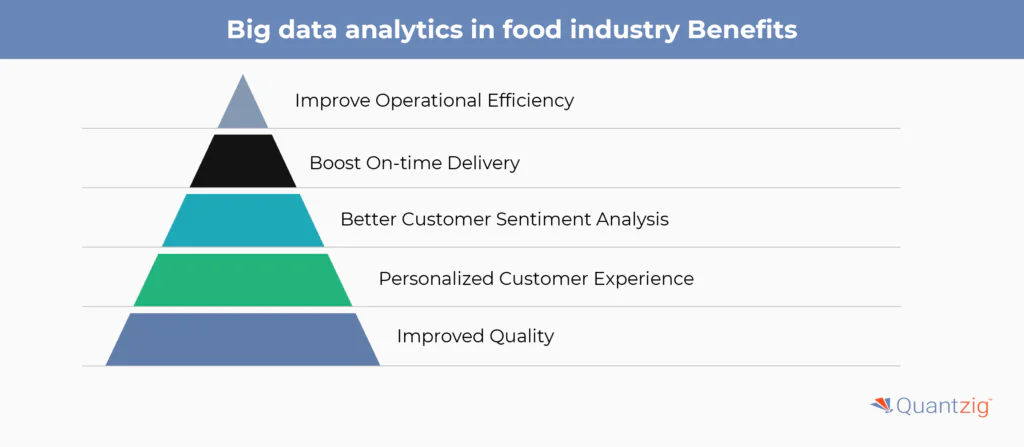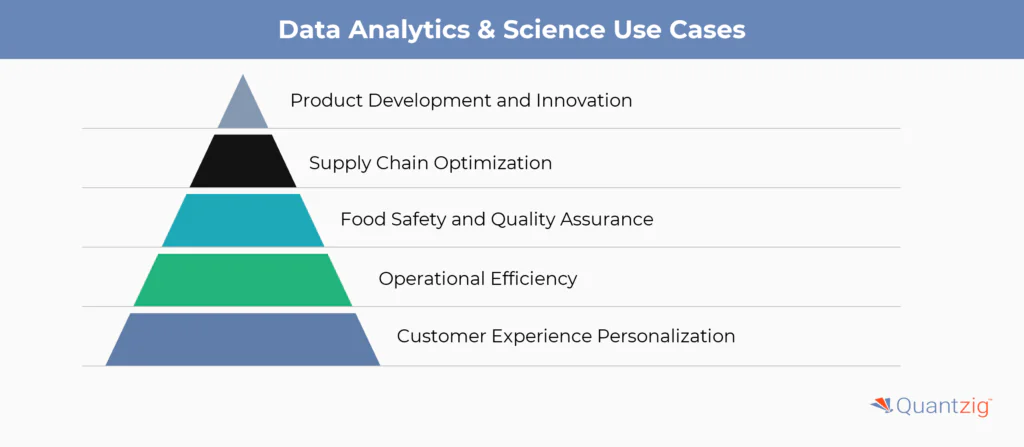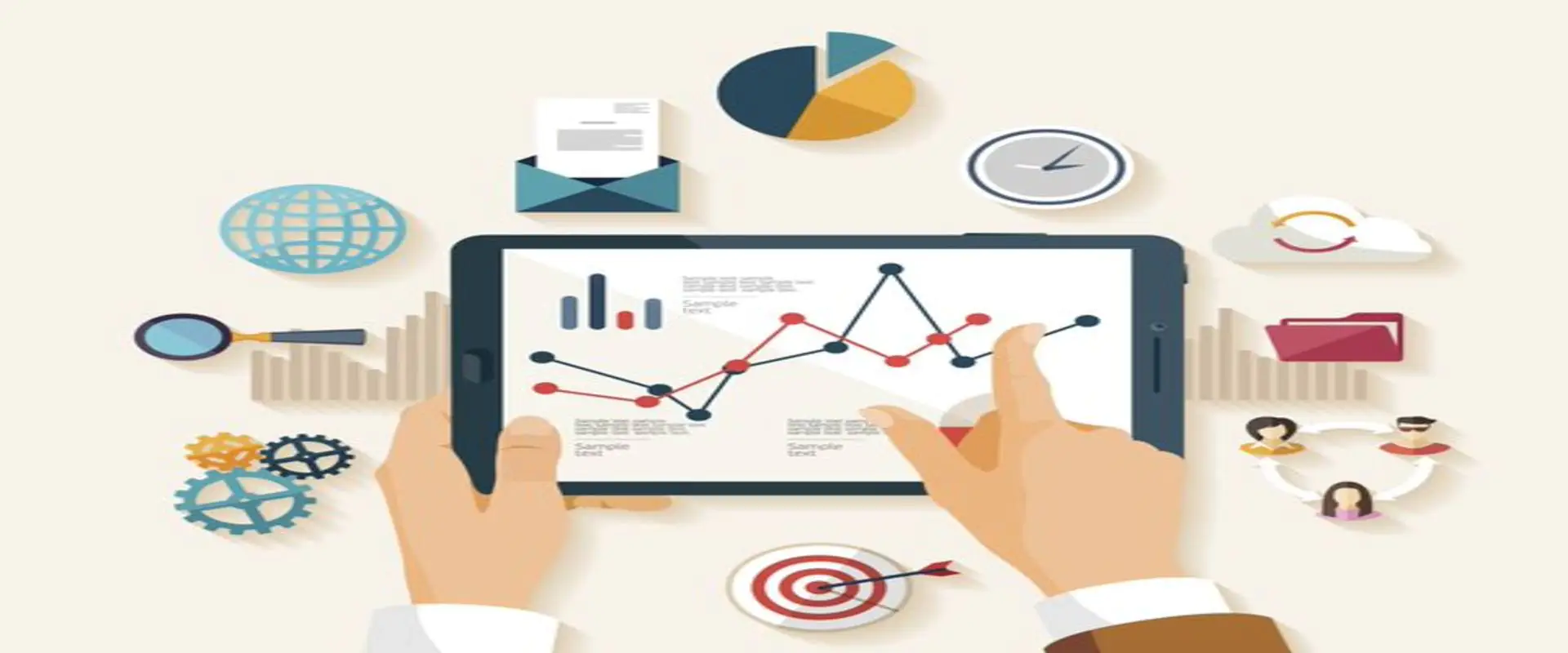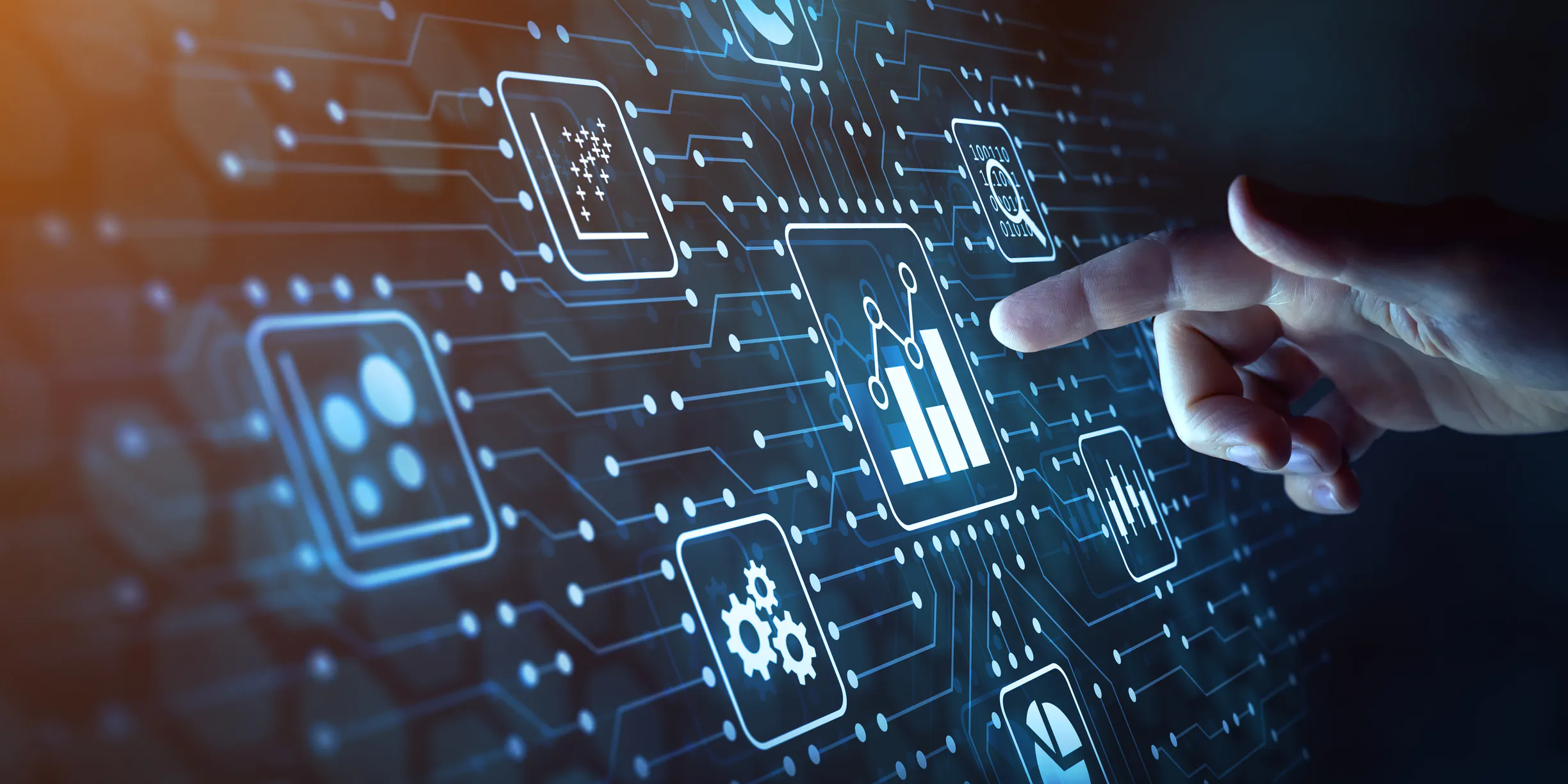Table of Contents
Introduction to Big Data Analytics in Food Industry
The food industry is one of the most profitable sectors across the globe. However, with the increase in global competition, companies in the food industry have started facing numerous challenges such as reducing supply chain waste, optimizing supply chain efficiency, boosting sustainable growth, implementing green policies, and finding a competitive advantage. To deal with such challenges, businesses in the food industry need to focus on leveraging big data and analytics to keep close tabs on new supply chain trends and competitors’ market progress.
At Quantzig, we understand that to ensure the efficiency and performance of your supply chains, from sourcing to manufacturing to delivery, optimization is required. And to help companies in the food industry thrive in the competitive landscape, our team of experts has highlighted five ways in which big data and analytics can help companies in the food industry to become market leaders.
Book a demo to experience the meaningful insights we derive from data through our analytical tools and platform capabilities. Schedule a demo today!
Request a Free DemoOverview of Big Data Analytics in Food Industry
Big data analytics is transforming the food industry by enabling data-driven decision making across the value chain, from new product development to supply chain optimization and customer experience personalization. By leveraging insights derived from analyzing large volumes of structured and unstructured data, food companies can drive innovation, enhance operational efficiency, ensure food safety, and deliver a superior customer experience.
How is Big Data and Analytics Revolutionizing the Food Industry?

1. Improve Operational Efficiency
- From analyzing the food industry trends to the effect temperature has on food quality, big data and analytics can help food industry businesses to ensure that they always deliver the best quality possible. But this is not the only way big data and analytics can improve operational efficiency.
- It can also help in analyzing customers’ behavior using their shopping data. By applying predictive analytics to historic shopping data companies in the food industry can cut the average checkout wait time. Big data and analytics can also help in analyzing market trends and suggest optimum inventory levels at different locations.
2. Boost On-time Delivery
- Using various big data and analytics tools and techniques, companies can also optimize the food delivery mechanism. Big data and analytics can help in collecting data from various sources like weather, road traffic, route, temperature, etc. and provide a proper estimate for the time taken to deliver goods.
- Moreover, big data and analytics can also predict the impact of all the above factors on the quality of food. Thus, big data and analytics ensure that you don’t waste your resources in transporting stale food products and deliver perishable food items in good quality.
3. Better Customer Sentiment Analysis
- Sentiment analysis is the process of monitoring customer behaviors over social media networks. Using IoT and digital transformation technology, companies can categorize consumer behavior into positive, negative, or neutral. This can help companies in the food industry to analyze their customer emotions on a scale.
- Any negative review can be analyzed at scale and preventive measures can be taken to prevent the spread of negative words. This technique is beneficial for large-scale food retailers like McDonald’s, KFC, Pizza Hut, etc.
4. Personalized Customer Experience
- Big data and analytics help companies to provide a personalized, customer-centric experience to every buyer. This includes important analysis of customer views like what they like, how much they can pay, what they share on social media, the stories they resonate with, the reviews they make, etc.
- Today, big data and analytics have made tracking, collection, and timely delivery all possible through data. Data analysis can give an insight into their changing behavior and improve the efficiency of marketing.
- The nexus of big data and machine learning in all its forms, including predictive analytics and even neural network deep learning, are the underpinnings of highly efficient, well informed, and deeply satisfying interactions that benefit both food industry businesses and customers.
5. Improved Quality
- Providing and maintaining the same taste of food for consumers is a very challenging task in the food industry. The taste of food not only depends upon the proper ingredients measurement but also on their storage, quality, and season. Big data for food and beverage and analytics can analyze such changes and forecast the impact of each on the food taste and quality.
- Big data and analytics can also analyze the impact of factors like transportation and storage on the quality of packaged foods. The insights from such analysis can be used to understand pain points and suggest improvement measures.
Book a demo to experience the meaningful insights we derive from data through our analytical tools and platform capabilities. Schedule a demo today!
Book a Free DemoHow Do AI and ML Revolutionize the Food and Beverage Sector?
1. Optimizing Food Production and Supply Chain
- AI-powered predictive analytics can forecast demand, optimize inventory, and streamline logistics to reduce waste and improve efficiency.
- Machine learning algorithms analyze data from sensors, drones, and satellites to monitor crop health, detect pests/diseases, and optimize farming practices.
2. Enhancing Food Safety and Quality Control
- Computer vision and AI can automate food inspection and quality assurance processes to identify contaminants, defects, and safety issues.
- AI-enabled monitoring can track compliance with food safety protocols in real-time across production and distribution.
3. Personalizing the Consumer Experience
- Predictive analytics and recommender systems provide personalized nutrition, meal planning, and recipe suggestions based on individual preferences and health needs.
- Smart kitchen appliances leverage AI to optimize cooking times, suggest recipes, and reduce food waste at the household level.
4. Improving Sustainability
- AI and data analytics enable more precise forecasting, inventory management, and route optimization to minimize food waste and emissions across the supply chain.
- Precision farming techniques powered by AI/ML help farmers optimize resource usage, increase yields, and adopt more sustainable agricultural practices.
5. Driving Business Insights and Innovation
- Advanced analytics uncover hidden patterns, trends, and correlations in large food industry datasets to inform strategic decision-making.
- AI-powered research and development can accelerate the discovery of new ingredients, formulations, and production methods.
In summary, the integration of AI, machine learning, and data analytics is transforming the food industry by enhancing efficiency, safety, personalization, and sustainability across the value chain – from farm to fork.
Benefits of Big Data Analytics in the Food Industry:
| Key Area | Description |
|---|---|
| Resource Management | GPS and GNSS technology help farmers track crop yield, terrain, and moisture levels, optimizing water use, reducing waste, and boosting crop yields through real-time insights. |
| Optimizing Inputs | By integrating soil, weather, and market data, businesses can optimize resources, increase crop yield, and reduce costs. |
| Proactive Monitoring | IoT and big data monitor food conditions from farm to fork, sending alerts to ensure quality and reduce waste. |
| Enhanced Traceability | IoT-enabled barcodes and RFID improve food traceability across the supply chain. |
| Real-Time Monitoring | Big data and IoT track food safety factors like temperature and humidity, sending automatic alerts to address issues and identify harmful bacteria. |
| Predictive Models | Predictive analytics use diverse data sources to detect potential food safety violations. |
| Improved Traceability | IoT-enhanced traceability helps companies track contamination sources and take corrective actions with real-time alerts for food safety risks. |
The Role of Big Data Analytics in Revolutionizing the Food Industry
Big data in the food industry and data science have significantly impacted the food industry, driving advancements in product development, operational efficiency, customer experience, and food safety. By leveraging data insights, businesses can optimize their processes and deliver improved services throughout the food value chain.
Applications of Big Data Analytics in the Food Industry

- New Product Development and Innovation
- Understanding Consumer Preferences: Big data allows businesses to analyze consumer behavior and preferences, enabling the creation of new products tailored to evolving demands.
- Market Testing: Virtual market tests, powered by data analytics, help businesses assess product popularity and financial impact before launching.
- Operational Efficiency and Delivery Services
- Optimizing Delivery Services: Analytics plays a vital role in enhancing the speed and quality of delivery services by analyzing customer data like location and preferences.
- In-Store Operations: Data helps streamline operations by reducing wait times, adjusting staffing schedules, and aligning resources with peak periods.
- Supply Chain Optimization
- Demand Forecasting: Predictive analytics enables businesses to forecast demand, optimize inventory, and improve logistics.
- Farm-to-Fork Monitoring: Using sensors and machine learning, businesses can monitor crop health, detect issues, and optimize farming practices for higher efficiency.
- Food Safety and Quality Assurance
- Automated Inspections: AI-powered systems ensure food safety by identifying contaminants and defects in real-time.
- Traceability and Monitoring: Technologies like blockchain, IoT sensors, and barcodes allow proactive monitoring of food quality and ensure transparency throughout the supply chain.
- Catering to Customer Preferences
- Menu Optimization: Data helps businesses tailor their menus by identifying popular and less popular items, improving customer satisfaction while reducing costs.
- Allergen Considerations: Understanding customer allergies through analytics helps modify recipes to accommodate a broader customer base.
- Customer Experience Personalization
- Personalized Nutrition: Businesses leverage predictive analytics to offer personalized meal suggestions, nutrition plans, and recipes.
- Supply Chain Transparency: Visualizing ingredient sources provides consumers with transparency, building trust in food products.
By harnessing the power of data analytics, the food industry is positioned to enhance operations, drive innovation, and ensure a superior customer experience, from farm to table.
Conclusion
Big Data and Analytics are revolutionizing the Food Industry through Data Analytics, Data Science, Machine Learning, and Artificial Intelligence. These technologies enable food manufacturing organizations to leverage Machine Learning (ML) algorithms and predictive analytics to understand consumer buying behavior and enhance customer satisfaction. By applying marketing personalization and targeting the right customers through social media campaigns, businesses in the Food and Beverage Sector can optimize their strategies. Analytics methodologies and business intelligence derived from market data analytics drive digital transformation, ensuring agile adaptation to market trends and delivering innovative machine learning solutions for sustainable growth.
Experience the advantages firsthand by testing a customized complimentary pilot designed to address your specific requirements. Pilot studies are non-committal in nature.
Request a Free Pilot




